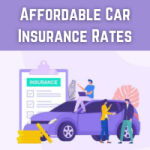Top Tips For The Best Car Insurance 2024.
Choosing the right car insurance can be a daunting task for new drivers. With a plethora of options available, it’s important to navigate through them wisely to ensure you’re adequately covered without breaking the bank. Here are top tips for new drivers on how to select the best car insurance.
Choosing the best car insurance as a new driver is a crucial step towards responsible vehicle ownership. By taking the time to research coverage options, evaluate your needs, compare quotes, and consider discounts, you can find the insurance policy that suits you best. Remember to review the policy terms and conditions and ensure the insurance provider has a good reputation for customer service and financial stability. With the right car insurance coverage in place, you can hit the road with confidence and enjoy your new driving journey.
Before hitting the road, it’s crucial to secure the best car insurance that provides reliable coverage and peace of mind. To make the process easier, here are some important tips for new drivers when choosing the best car insurance.
1. Understand Different Types of Coverage
Before you start shopping, understand what each type of car insurance coverage means and what it offers. The primary ones include:
- Liability Insurance: Covers damages to others caused by you in an accident. It’s mandatory in most states.
- Collision Insurance: Pays for repairs to your car after an accident.
- Comprehensive Insurance: Covers non-accident-related damages to your car, like theft or weather damage.
- Personal Injury Protection (PIP): Helps with medical expenses for you and your passengers after an accident.
2. Assess Your Coverage Needs
As a new driver, you might be more prone to mistakes, making comprehensive and collision coverage more appealing. However, if you’re driving an older model, the cost of these coverages might outweigh the car’s value. Carefully assess what coverage you genuinely need.
3. Shop Around
Don’t settle for the first quote you receive. Prices and offers vary significantly between insurers. Use online comparison tools, but also consider contacting insurance agents directly. Sometimes, they can offer discounts or adjust coverages to better fit your needs.
4. Understand the Impact of Your Deductible
Your deductible is what you agree to pay out of pocket in the event of a claim before your insurance kicks in. Opting for a higher deductible can lower your premium, but make sure it’s an amount you can comfortably afford if you need to make a claim.
5. Look for Discounts
Many insurance companies offer discounts to new drivers who meet certain criteria, such as:
- Good student discounts: For those who maintain a certain GPA.
- Defensive driving course discounts: For new drivers who complete an approved course.
- Low mileage discounts: For drivers who don’t drive a significant number of miles annually.
6. Consider Your Vehicle Choice
The make, model, and age of your car can significantly affect your premiums. New, expensive, or sporty cars typically cost more to insure. If you’re yet to buy a car, consider insurance costs as part of your decision.
7. Read Reviews and Check Financial Stability
Choose an insurer that is known for good customer service and timely claims processing. Online reviews and ratings can provide insights into a company’s customer satisfaction. Also, check the financial stability of the insurance company through ratings agencies like A.M. Best or Standard & Poor’s.
8. Understand Your Policy
Before signing, ensure you fully understand what your policy covers and what it doesn’t. If there’s anything you don’t understand, don’t hesitate to ask your agent for clarification.
9. Update Your Policy as Needed
Your insurance needs may change over time. Regularly review and update your coverage to reflect new circumstances, like moving to a new state, getting married, or buying a new car.
10. Practice Safe Driving
Ultimately, your driving record will have the most significant impact on your insurance rates. Practicing safe driving not only keeps you and others safe but can also help keep your insurance premiums low. Many insurers offer safe driving discounts to drivers without any infractions or accidents.
By following these tips, new drivers can navigate the complex world of car insurance more confidently, ensuring they choose the best coverage for their needs while managing costs effectively. In this article, we have listed the best car insurance platforms available in the US in 2024, for the guidance of the public, their features, benefits and the platforms that provide the best services for new drivers.Stay connected with our platform for more information and satisfactory guidance.
11. Research Coverage Options
Before selecting a car insurance policy, it’s essential to understand the different coverage options available. Liability insurance is mandatory in most states, covering damages to others in an accident you are found responsible for. Comprehensive and collision insurance provide coverage for your vehicle. Consider additional coverage options like roadside assistance, rental car reimbursement, and uninsured/underinsured motorist coverage to protect yourself further.
12. Evaluate Your Needs
New drivers should consider their specific needs when choosing car insurance. Assess factors like driving frequency, the value of your vehicle, and the level of financial protection required. For example, if you own a brand-new car, comprehensive coverage might be a wise choice. On the other hand, if you have an older car with low value, opting for liability coverage alone can be more cost-effective.
13. Compare Quotes
To find the best car insurance, it’s crucial to shop around and compare quotes from multiple insurance providers. Utilize online comparison tools or engage with independent insurance agents to obtain different quotes. Don’t solely focus on the cheapest option; instead, consider the coverage provided, customer reviews, and the insurer’s reputation for customer service.
14. Look for New Driver Discounts
Many insurance companies offer discounts specifically targeted towards new drivers. These discounts may include good student discounts or safe driver incentives. If you meet the requirements, these discounts can significantly lower your premium. Explore the eligibility criteria and take advantage of every discount you qualify for.
15. Consider Telematics or Usage-Based Insurance
Telematics or usage-based insurance programs track driving behavior using devices or mobile apps. These programs monitor factors like speed, acceleration, and braking to assess risk accurately. If you are a new driver who practices safe driving habits, you may benefit from reduced premium rates by participating in these programs.
16. Check for Financial Stability and Customer Service
While comparing car insurance options, consider the financial stability and customer service record of the insurance provider. Look for companies with high ratings from reputable rating agencies, ensuring they have the financial capacity to pay claims promptly. Additionally, read customer reviews and assess the insurer’s responsiveness and efficiency in handling claims and customer inquiries.
17. Review the Policy Terms and Conditions
Before committing to a car insurance policy, carefully review the terms and conditions outlined in the policy document. Pay attention to aspects such as deductibles, coverage limits, exclusions, and any additional fees or penalties. It’s essential to have a clear understanding of what is covered and what isn’t to avoid surprises later.






